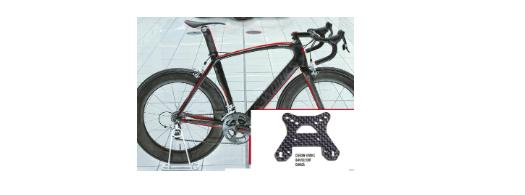•A fiberglass, carbon fiber or aluminum mold
is polished and waxed, and has a release agent applied before the fabric and
resin are applied, and the vacuum is pulled and set aside to allow the piece to
cure (harden).
• There are two ways to apply the resin to the
fabric in a vacuum mold. One is called a wet layup, where the two-part resin is
mixed and applied before being laid in the mold and placed in the bag.
•The other is a resin induction system, where
the dry fabric and mold are placed inside the bag while the vacuum pulls the
resin through a small tube into the bag, then through a tube with holes or
something similar to evenly spread the resin throughout the fabric. Wire loom
works perfectly for a tube that requires holes inside the bag.
•Both of these methods of applying resin
require hand work to spread the resin evenly for a glossy finish with very
small pin-holes.
• A third method of constructing composite
materials is known as a dry layup. Here, the carbon fiber material is already
impregnated with resin (prepreg) and is applied to the mold in a similar
fashion to adhesive film. The assembly is then placed in a vacuum to cure. The
dry layup method has the least amount of resin waste and can achieve lighter
constructions than wet layup. Also, because larger amounts of resin are more
difficult to bleed out with wet layup methods, prepreg parts generally have fewer pinholes. Pinhole
elimination with minimal resin amounts generally require the use of autoclave pressures to purge the residual gases out.
